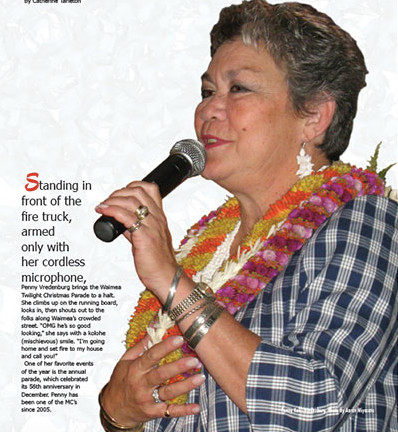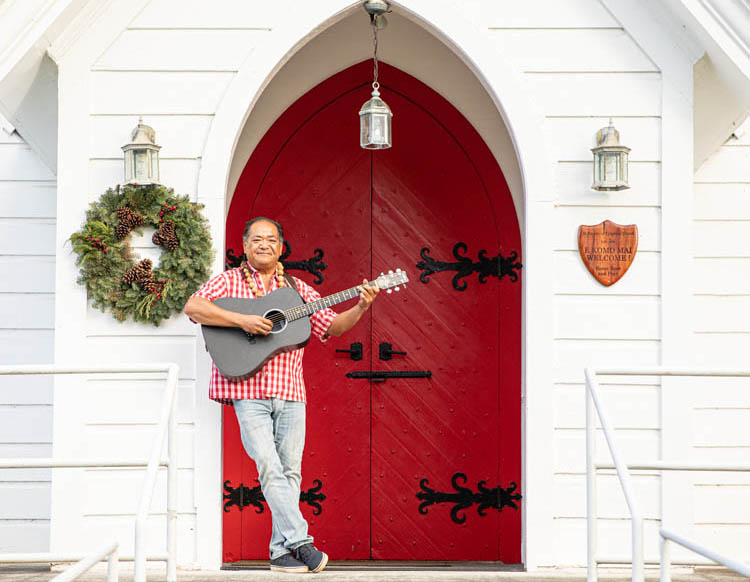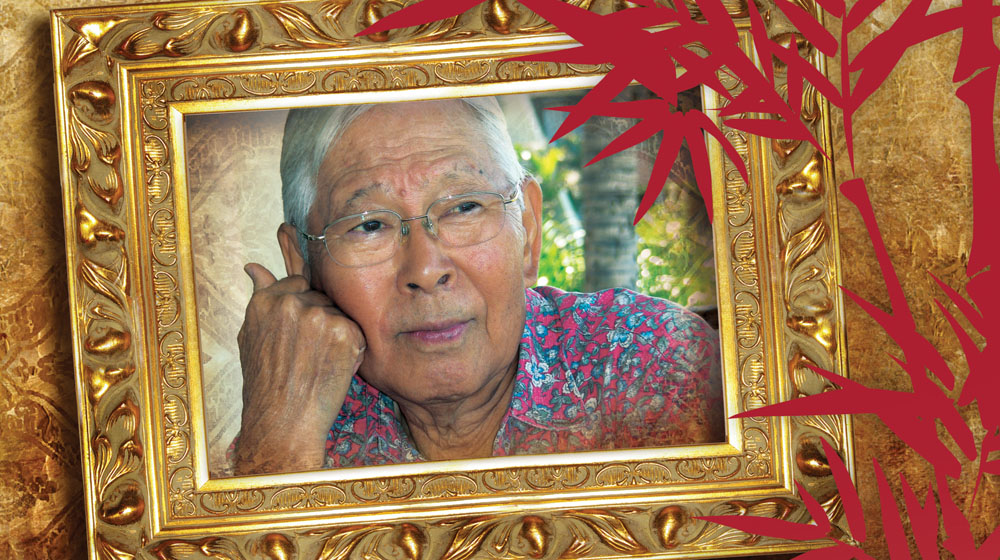
John Tanaka: WWII Hero, Inventor, Artist, Novelist
 By Catherine Tarleton
By Catherine Tarleton
John Tanaka’s life spans 80-plus years across two centuries and throughout, he has remained youthful, inventive, positive and forward-thinking. His ageless face and energetic voice make one wonder if there’s a fountain of youth hidden in John and Amy Tanaka’s Mauna Lani Point home, amid the fine art, dozens of flowerpots, koa furniture, books, bowls of papaya and banana, children’s drawings, travel mementos and other treasures from a life well-lived.
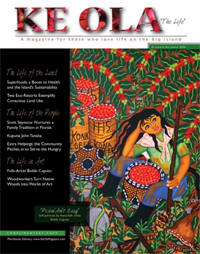
Businessman, raconteur, war correspondent, counter-intelligence agent, inventor, music lover, grandpa and author of two historical novels, John Tanaka is a Hawai‘i success story in progress. Originally from O‘ahu, he attended the University of Hawai‘i, majoring in Zoology, but in his sophomore year, the Japanese forces attacked Pearl Harbor.
“I volunteered for the [U.S. Army] Air Corps because I was into model airplanes from small-kid days. I really wanted to fly,” Tanaka said. His best efforts to join the Air Corps resulted in Army infantry basic training at Camp Hood in Texas. “I guess they didn’t mind me stopping a bullet, but an Oriental would never be allowed to fly a plane.”
After boot camp, as his unit prepared to deploy to Europe and join the 442nd Infantry Regiment, Tanaka and 34 other soldiers were pulled aside without explanation and shipped to Camp Ritchie, Maryland. Two weeks later, their commanding officer informed them they were now members of the Army Counter-Intelligence Corps (CIC).
“Are we going to be spies?” Tanaka said, “That’s what I thought, when I heard we were going to China to gather information in advance of the invasion force. Then the atomic bomb fell.”
Tanaka’s unit was the first to go to Yokohama, Japan, after the peace treaty was signed. Because their mission was to monitor Japanese Communists, CIC agents received trainloads of U.S. sugar, bread, beef, chewing gum, Coca-Cola and other riches, to help them buy information. “When they saw American cigarettes,” said Tanaka, “They were practically ready to give us their wives.”
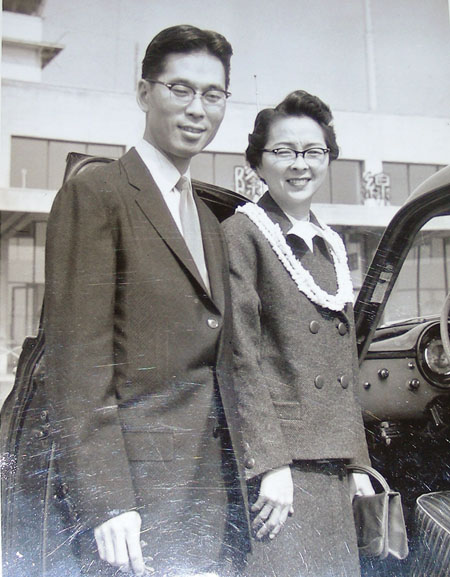
Tanaka was with the unit that arrested Grand Admiral Nagano, principal leader of the attack on Pearl Harbor. Rousted from his home in Tokoshima prefecture, Nagano was strip-searched and taken away. “The wife and children never cried,” says Tanaka, “They just said ‘We’ll see you again.’” During the drive back to base, Tanaka and Nagano, a Harvard graduate, discussed naval history—in English.
Later, moved by the family incident, Tanaka loaded up a Jeep with food and supplies and visited Mrs. Nagano. He was invited in for tea, treated with courtesy, but his treasures were politely declined, dictated by Bushidō pride in spite of their needs. (Bushidō etiquette, “the way of Samurai warriors,” is a 19th century code of honor that values loyalty and self-sacrifice as a spiritual discipline.)
When he received his discharge papers he went back to say goodbye to Mrs. Nagano. For his kindness, and perhaps because she believed him to be the kind of soldier who could properly honor it, she presented Tanaka with a small, black lacquer box. Inside, one of Nagano’s military medals, the Order of the Sacred Treasure.
“There was no way I could refuse,” said Tanaka. “It brought tears to my eyes.” (Tanaka and his son have since then tracked down a rightful heir in Tokyo.)
After his military service, Tanaka’s encounter with Nagano inspired an interest in foreign affairs, so he enrolled in Columbia University to follow that course of study. Shortly after, General Dwight D. Eisenhower was installed as chancellor. “I always saluted him and he saluted back,” says Tanaka, “I think it was because I wore my military topcoat. I never had money to buy a civilian one.” He cherishes the framed Masters Degree in International Affairs, with Eisenhower’s signature.
Tanaka graduated when the Korean War was underway, and went to work as a United Nations war correspondent assigned to Hawai‘i’s 25th Infantry Division. He joined the Foreign Correspondents Club in Tokyo, where he met “some of the most famous people on earth,” he said, including James Michener and Lee Eun, the last Crown Prince of Korea. He also met influential Japanese businessmen like Messrs. Masuda, Okura, Mitsui and Yanase. They had heard about “television” and wanted to bring the industry to Japan, so they put together the first Television Corporation of Japan, with Tanaka as managing director. Tanaka also represented other Japanese companies in the US, including the tape recorder manufacturer that became Panasonic, and he was the exclusive distributor for Daihatsu off-road vehicles, but none met with overwhelming success. “We were too early,” said Tanaka.

Through mutual friends in Japan, Tanaka met his wife Amy, who came from Ninole on the Big Island, and the next adventure began. After years of hard work in various businesses, their big break finally came in the form of a small, barely-known process within an infant industry, the manufacturing of “silicon wafers.” Tanaka worked with Asahi Diamond to make ultra-thin cutting blades of super alloy metal coated with diamonds, which could slice a 12-inch single-crystal silicon block called a boule, into wafers for computer chips. “There were 12 companies in the U.S. that sliced silicon,” said Tanaka, “And we supplied them all. This time we were right on time.”
Tanaka’s son Dwight now successfully runs the company, Current EDM, Inc. “He’s making holes,” Tanaka says proudly. “He’s into machining ultra-small-diameter holes into super alloys.” According to him, all jet aircraft turbines of super alloys require air circulation through the metal to keep them from exploding. Using a process called “spark technology,” he builds and distributes precision machine tools to drill hundreds of microscopic holes with electrons. The technology continues to evolve.
Tanaka himself continues to evolve, these days as a writer and designer. His first historical novel about Hawai‘i, Yesterday’s Rainbow, was self-published in 2007. “I wrote it to keep this old engine running,” he said with a laugh. “I was always interested in writing and I always thought the downfall of the monarchy would be a good theme.”
Yesterday’s Rainbow is a love story–not just of the two lovers for each other, but of the author’s for his homeland. It takes place across the years from King Kamehameha’s reign to the overthrow of Queen Lili’uokalani, with intriguing elements of mythology and cultural symbolism. Why a novel? “I wanted to make Kamehameha talk,” says Tanaka. “To do that, I had to make it fiction.”
Tanaka’s second book, Aloha ‘Oe, the Song at Pier 10, published by Island Heritage, is a labor of love, inspired by his love and admiration for the Royal Hawaiian Band. In it, Tanaka speculates that Band Master Heinrich Berger, the Prussian military officer who came to Hawai‘i in 1872, and Queen Lili’uokalani, herself an accomplished musician and songwriter, may have become “more than close friends.” Berger wrote the arrangements for Lili’uokalani’s famous song “Aloha ‘Oe,” and hundreds of others, creating, performing and preserving some of Hawai‘i’s best-loved music during turbulent times.
While researching Pier 10, Tanaka discovered an unusual story about the Hawai‘i Coat of Arms, and was driven to study it. In 1881, as King David Kalākaua was visiting Paris, he discovered a long-forgotten coat of arms in an old heraldry shop, commissioned by visitors years earlier. The King was excited, but saw the coat of arms contained many non-Hawaiian elements—ermine capes and metal helmets for example. He requested corrections and ordered a new version as engraving plates for his formal coronation invitations. Unfortunately, in the French-English-Hawaiian communication breakdown, the plates arrived still flawed, but were used anyway.
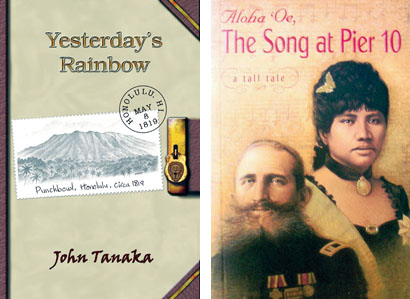 Tanaka elected to produce a culturally accurate rendition. He commissioned Hamakua artist Janice Gail to paint it in detail, according to his painstaking research. This coat of arms has been published as matted art prints by Island Heritage and gifted to Iolani Palace, Hulihe’e Palace, the Office of Hawaiian Affairs, Bishop Museum and Governor Lingle’s office.
Tanaka elected to produce a culturally accurate rendition. He commissioned Hamakua artist Janice Gail to paint it in detail, according to his painstaking research. This coat of arms has been published as matted art prints by Island Heritage and gifted to Iolani Palace, Hulihe’e Palace, the Office of Hawaiian Affairs, Bishop Museum and Governor Lingle’s office.
From books, Tanaka turned to inventing and then design. His latest enterprise is “Tanaka Ryu” (Tanaka Style), a remarkable new hanging garden concept for beautiful homes. Tanaka Ryu combines elegant copper pots and vases with coconut-frond baskets, bamboo, fir and other natural and manmade materials into simple, elegant displays for flowers and plants. Tanaka has the hanging gardens constructed locally, working with a master weaver for the coconut baskets, and with a museum-quality coppersmith on the mainland.
“A Tanaka Ryu hanging garden is intended to be displayed as a work of art,” said Tanaka. “It can be used in the same space as a large painting, and it allows nature to be the artist, and flowers, leaves, branches, anything you love, to be the art.”
Inspired by the traditional Japanese flower arranging art of Ikebana, Tanaka also emphasizes the linear design elements in his hanging gardens. “All the flowers or leaves or branches should point up, towards the heavens,” he said. “And there are three pieces in each container, representing, Nature, Man, and God. That is also why the different lengths are always hung in an ascending line, reaching up to Heaven,” Tanaka says, looking upward. His face becomes youthful again, as the smile widens across his face.
What’s next? “I’d love to see Pier 10 performed on stage,” said Tanaka. “And I’ve been doing a lot of research on whales and their natural navigation system.”
Whatever course he chooses, John Tanaka’s secret to success is not a hidden fountain of youth. The secret is in the everyday wisdom that inspires John and Amy through hard times and happy times from the 20th to the 21st Century. “You make it fun,” he says. “It works every time.” ❖
Contact Catherine Tarleton at catherinetarleton@gmail.com.
Photos courtesy of John and Amy Tanaka.

